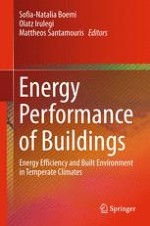2016 | OriginalPaper | Buchkapitel
9. Households: Trends and Perspectives
verfasst von : Antonio Serra
Erschienen in: Energy Performance of Buildings
Aktivieren Sie unsere intelligente Suche, um passende Fachinhalte oder Patente zu finden.
Wählen Sie Textabschnitte aus um mit Künstlicher Intelligenz passenden Patente zu finden. powered by
Markieren Sie Textabschnitte, um KI-gestützt weitere passende Inhalte zu finden. powered by
